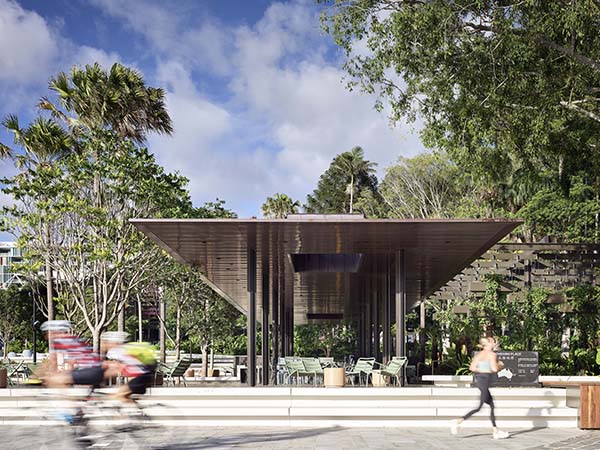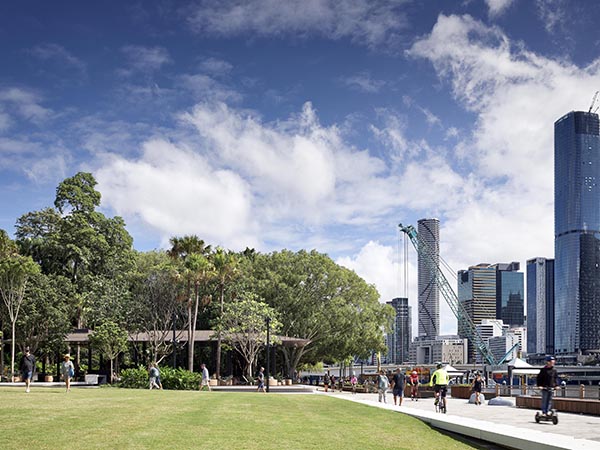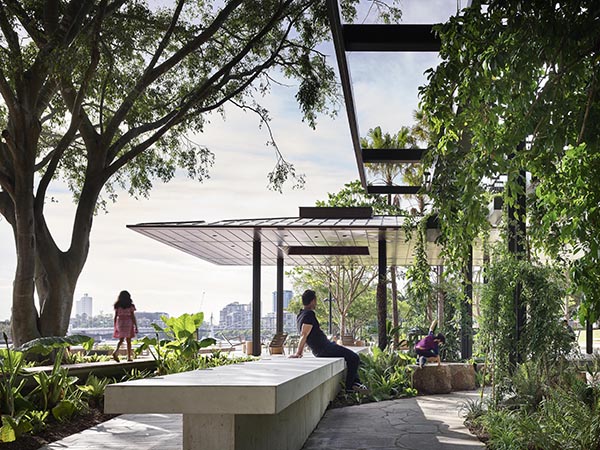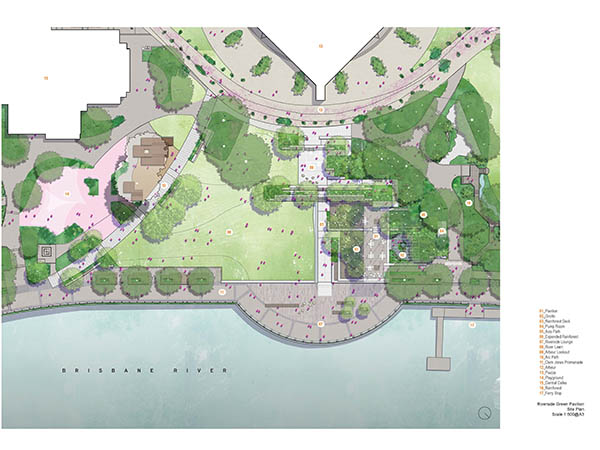Riverside Green establishes a new ‘green heart’ for Brisbane’s South Bank Parklands on the site of a former restaurant damaged by the 2011 floods.
In creating an accessible and open place of recreation, the project favours public, green space over enclosed, private space, as once existed in the form of restaurants.

The change of use, from privatised restaurants to natural landscape and shade pavilion was tested when a 2022 river flood impacted South Bank Parklands.

Riverside Green emerged resilient. This was due to multiple factors, one being the open nature of the landscape and the resilience of the pavilion’s componentry and materials. The use of durable, hardwearing materials was key to ensuring a robust and low maintenance landscape outcome.
The most sustainable element of Riverside Green is its landscape – which is low maintenance. Riverside Green extends the adjacent rainforest by 650sqm, boosting the urban tree canopy of South Bank Parklands with more than 50 new trees.

The resilience and sustainability of Riverside Green landscape and Pavilion is centred around being well-made and built to last. The pavilion itself uses materials chosen for their longevity or designed to be able to be easily replaced.
An example of longevity is the copper roof and ceiling, the primary material, which has a lifespan of 100 years. Locally sourced Australian timber decking will last 15-20 years.

Building less with more. Relying on passive design – natural light, natural ventilation, natural shade via landscape to reduce energy demands and improve comfort particularly in warm weather environments.
Finally, championing landscape over built form – it is a more cost effective and more sustainable strategy in every instance.

The sustainable products used in this build:
- The most sustainable element of Riverside Green is its landscape – which is low maintenance. Riverside Green extends the adjacent rainforest by 650sqm, boosting the urban tree canopy of South Bank Parklands with more than 50 new trees.
- The resilience and sustainability of Riverside Green landscape and Pavilion is centred around being well-made and built to last. The pavilion itself uses materials chosen for their longevity or designed to be able to be easily replaced.
- An example of longevity is the copper roof and ceiling, the primary material, which has a lifespan of 100 years. By comparison a common alternative is Aluminium which would have a lifespan of 20-25 years.
- Locally sourced Australian timber decking will last 15-20 years. The thickness of the timber was increased to allow sanding and refinishing to prolong its life and it is screw fixed to its substrate so pieces can be removed individually or on mass as wearing develops.
- Copper was also selected as it can be detailed without exposed fixings which typically are the first point of failure. A particular leaf guard was installed to mitigate issues with leaves and water ponding that causes corrosion. Similarly, the expressed steelwork is welded or has concealed and protected fixings reducing points where corrosion can occur.
- The paintwork of the expressed steelwork is a 3-coat system which maximises its lifespan.


